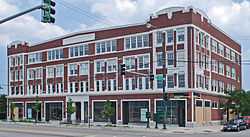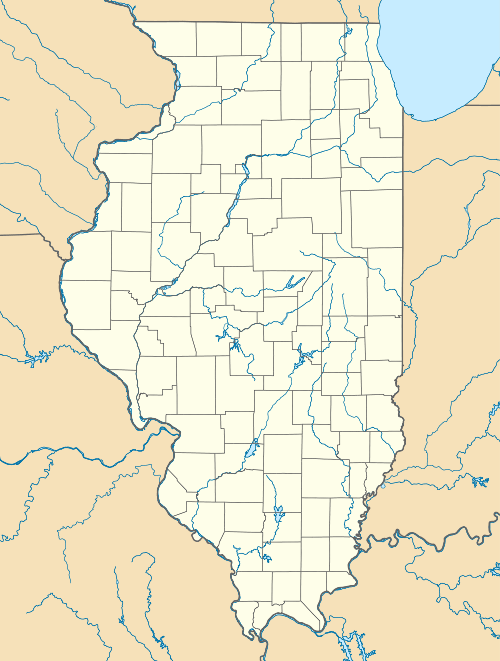Overton Hygienic Building
|
Overton Hygienic Building | |
|
Chicago Landmark | |
 | |
 | |
| Location |
3619-27 S. State St. Chicago, Illinois |
|---|---|
| Coordinates | 41°49′40.94″N 87°37′34.26″W / 41.8280389°N 87.6261833°WCoordinates: 41°49′40.94″N 87°37′34.26″W / 41.8280389°N 87.6261833°W |
| Built | 1922 |
| Architect | Smith,Z. Erol |
| Governing body | Private |
| MPS | Black Metropolis TR |
| NRHP Reference # | 86001091 [1] |
| Significant dates | |
| Added to NRHP | April 30, 1986 |
| Designated CL | September 9, 1998 |
The Overton Hygienic Building is a Chicago Landmark and part of the Black Metropolis-Bronzeville District in the Douglas community area of Chicago, Illinois. It is located at 3619-3627 South State Street.
The building was commissioned by Anthony Overton in 1922 as a combination of a store, office, and manufacturing building. Overton would later commission the Chicago Bee Building in 1929. It was regarded as one of the most important buildings within the district.[2] The Overton Hygienic Company was one of the nation's largest producers of African-American cosmetics. Anthony Overton also ran other businesses from the building, including the Victory Life Insurance Company and Douglass National Bank, the first nationally chartered, African-American-owned bank.[3] Walter T. Bailey, the first licensed African-American architect in the state of Illinois, had his first Chicago office on the second floor of the Overton Hygienic Building.[4][5][6]
The building was later named the Palace Hotel and served for some time as a flophouse, with residents crowded into stalls 8 feet by 5½ feet. The second, third, and fourth floors each housed 125 stalls, with dormitory-style bathrooms and showers, for a total of 375 stalls.[7] The building is now owned and being developed by the Mid-South Planning and Development Commission, which will use the building as an incubator for small businesses and startups within the Black Metropolis neighborhood.[8]
References
- ↑ "National Register Information System". National Register of Historic Places. National Park Service. 2007-01-23.
- ↑ "National Register of Historic Places Multiple Property Submission: Black Metropolis Thematic Nomination". November 7, 1985. Retrieved 2007-06-26.
- ↑ "Chicago Landmarks - Overton Hygienic Building". Chicago Landmarks Commission. 2003. Retrieved 2007-06-26.
- ↑ Bey, Lee. "Art Moderne beauty: First Church of Deliverance", WBEZ, 91.5, February 15, 2010, accesssed November 29, 2010.
- ↑ Savage, Beth L. and National Register of Historic Places. African-American Historic Places, (Google Books link), John Wiley and Sons, 1994, p. 207, (ISBN 0471143456).
- ↑ Wilson, Dreck Spurlock. African-American Architects: A Biographical Dictionary (1865-1945), (Google Books link), Taylor & Francis, 2004, pp. 15-17, (ISBN 0415929598).
- ↑ "The View from the Ground - Blog Archive - Up on the Roof". June 30, 2001. Retrieved 2007-06-26.
- ↑ "Chicago Travel Itinerary - Overton Hygienic Building". National Park Service. Retrieved 2007-06-26.
| ||||||||||||||||||||||||||